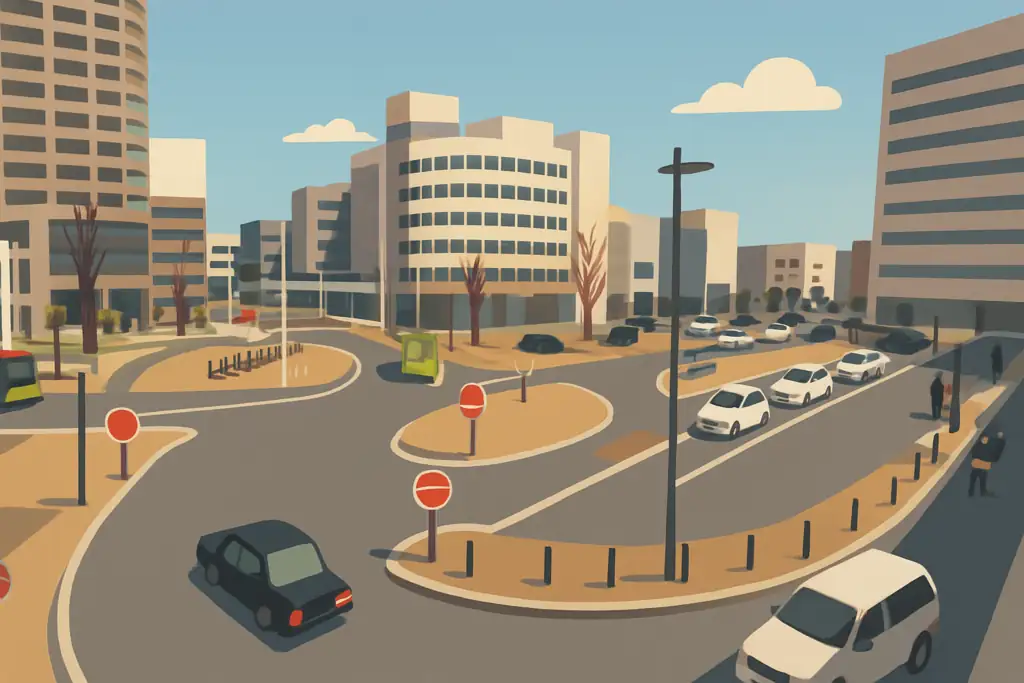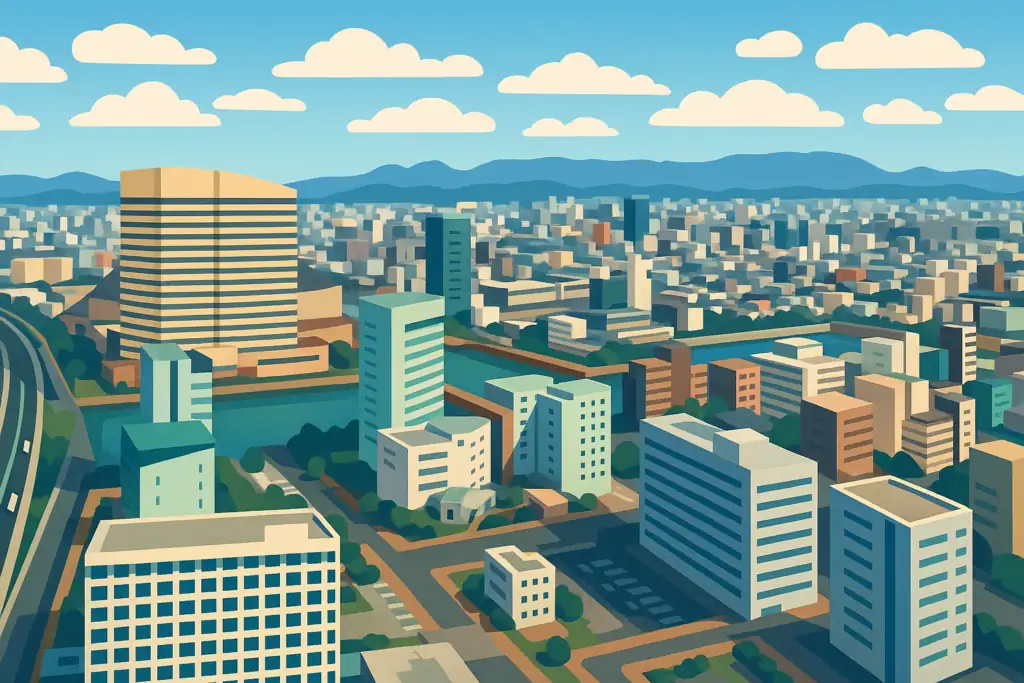The cost of living in Japan can vary greatly depending on the region. In major cities like Tokyo and Osaka, rent and food expenses tend to be high. On the other hand, many prefectures in rural areas offer a rich natural environment, a comfortable lifestyle, yet with lower living costs.
In this article, we will introduce five prefectures in Japan known for their low living costs. We will also introduce unique characteristics of each prefecture, as well as consultation services for foreigners regarding employment and daily life.
At Village House, we offer rental properties all across Japan, with one in five of our tenants is a foreign resident. Our call center is staffed by foreign staff members with multilingual support, so if you’re looking for a place to live in Japan, feel free to contact us anytime.
The most affordable prefectures to live in Japan

According to the “Regional Consumer Price Index – Retail Price Statistics Survey (Structural Edition) 2023” published by Japan’s Ministry of Internal Affairs and Communications, Kagoshima Prefecture has the lowest cost of living in the country, followed by Miyazaki, Gunma, Oita, and Fukuoka Prefectures.
Compared to major cities like Tokyo and Osaka, these prefectures generally have smaller populations and are rich in natural attractions. From mountains and oceans to hot springs and scenic countryside, each region offers its own unique charms—making them ideal for those seeking a more relaxed lifestyle.
Now, let’s take a closer look at these five appealing prefectures.
Kagoshima Prefecture

Located at the southern tip of Kyushu, Kagoshima Prefecture is renowned for its stunning natural landmarks like Sakurajima Volcano and Yakushima Island. Additionally, the region has around 100 hot springs, making it the second most onsen-rich prefecture in Japan after Oita Prefecture. Many of these hot springs can be found scattered throughout the city, along with a well-rooted culture where locals frequently stop by to relax and unwind.
Kagoshima’s rich food culture is another highlight, featuring local specialties such as Kurobuta pork, Satsuma-age (fried fish cake), and authentic shochu (distilled spirit) for everybody to enjoy. The mild climate supports agriculture and livestock industries to thrive, ensuring easy access to fresh, locally sourced ingredients.
According to a survey conducted by the end of October 2023, there are approximately 12,000 foreign residents living in Kagoshima Prefecture. The majority come from Vietnam, Indonesia, the Philippines, and China—with these top four nationalities accounting for 81.2% of the total foreign population.
For international students hoping to work in Kagoshima, the prefecture provides job hunting consultations and support services. If you’re interested, please contact the “Support for Foreign Students Wanting to Work in Kagoshima” service for assistance.
Sources:
- Kagoshima Prefecture Labor Bureau | Summary of “Foreign Employment Situation” Notification Status within the Jurisdiction of the Kagoshima Labor Bureau (as of the end of October 2023)
- Kagoshima Prefecture Public Bathhouse Industry Sanitation Cooperative Association | Kagoshima Sento
Miyazaki Prefecture

Miyazaki Prefecture is known as the “Sunny Side of Japan” thanks to its mild climate, with an annual average temperature of 17°C and many sunny days throughout the year. It’s a great destination for enjoying marine sports like surfing and scuba diving, as well as outdoor activities such as golf and trekking.
Taking advantage of its warm climate, Miyazaki Prefecture is also known for its agriculture and livestock industries. The prefecture is especially famous for its delicious local products, such as Miyazaki beef and mangoes. Moreover, it is home to many shrines and sacred sites associated with ancient myths and traditions, adding a mystical charm to the region.
According to a survey conducted by the end of December 2023, there are approximately 9,700 foreign residents living in Miyazaki Prefecture. The majority are from Vietnam, Indonesia, the Philippines, China, and Myanmar, with these top five nationalities making up 73.5% of the total foreign population.
Furthermore, Miyazaki Prefecture implements the “Employment and Recruitment Support Program for International Students” as well as a “Miyazaki Foreign Resident Support Center,” which provides consultations on daily life matters, helping ensure a smooth transition for newcomers.
Source: Miyazaki Prefecture | Section II – Foreign Residents in the Prefecture | Supporting employment and recruitment for foreigners and international students!
Gunma Prefecture

While being the third most affordable prefecture to live in Japan, Gunma Prefecture is located in the Kanto region and has good access to the city center, just about an hour from Tokyo by Shinkansen. With a thriving agricultural industry, it’s easy to find fresh vegetables and fruits, which would help keep food costs low. Additionally, rental prices are generally more affordable compared to the city center, making it an ideal place for those looking to reduce their overall cost of living.
According to a survey conducted in December 2024, there are approximately 81,000 foreign residents living in Gunma Prefecture. The majority come from Vietnam, Brazil, the Philippines, China, and Indonesia — with these top five nationalities making up 63.1% of the total foreign population.
Gunma is also home to many companies that actively welcome foreign workers. If you ever face challenges or have questions about your daily life, you can always consult with the One-Stop Consultation Center for Foreign Residents of Gunma.
Source: Status of Foreign Resident Numbers as of the End of December 2024
Oita Prefecture

Oita Prefecture is famous for being Japan’s number one hot spring destination, particularly famous for Beppu Onsen and Yufuin Onsen. With over 4,000 natural hot spring sources in the prefecture, Oita ranks number one in Japan for both the number of hot spring sources and the volume of water output.
Furthermore, Oita is surrounded by the sea and mountains, allowing you to enjoy fresh seafood and vegetables, as well as scenic landscapes throughout the four seasons.
According to a survey conducted in December 2024, there are approximately 20,000 foreign residents living in Gunma Prefecture. The majority are from Vietnam, Indonesia, Myanmar, China, and the Philippines, with these five nationalities accounting for 65.5% of the total foreign population.
In addition, the “Oita Prefecture Foreign Residents’ Comprehensive Consultation Center” accepts consultations regarding employment and daily life by phone, email, face-to-face, and Zoom to help foreign residents live with a peace of mind.
Sources:
- Oita Prefecture|On the Number of Foreign Residents in the Prefecture
- Ministry of the Environment|Hot Spring Usage Status in 2015, Natural Environment Bureau, Ministry of the Environment Hot Spring Usage Status in 2015
Fukuoka Prefecture

Fukuoka Prefecture is a comfortable region to live where the convenience of the city and the abundance of nature coexist. Transportation is highly convenient, with the subway, Shinkansen, and airports all located in close proximity, making it easy to travel both domestically and internationally.
Fukuoka also strives to accept foreigners and support their lives. From job opportunities to educational environments, this prefecture provides a solid foundation for those looking to start a new chapter of life in Japan.
According to a survey conducted in December 2023, there are approximately 100,000 foreign residents living in Fukuoka Prefecture. The majority come from Vietnam, China, South Korea, Nepal, and the Philippines—with these top five nationalities accounting for 78.5% of the total foreign population.
Source: Fukuoka Prefecture|Number of foreign residents (registered foreign nationals)
Fukuoka Prefecture also offers the following consultation services related to employment, daily life, and administrative procedures for foreign residents:
Operated by the Ministry of Health, Labour and Welfare, this center (part of Hello Work) supports international students, foreign nationals seeking employment, and companies looking to hire foreign workers.
Established by Fukuoka City and operated by the Fukuoka Yokatopia International Exchange Foundation, this center provides consultation on a wide range of everyday matters such as residency procedures, employment, healthcare, welfare, childbirth and child-rearing, and children’s education. Services are available in person, by phone, and via email.
At Village House, we actively welcome foreign residents. The call center also has multilingual staff available, so even those who are not confident in their Japanese can feel free to reach out to us.
Related articles:

Hello, I’m Machiko Doi, a freelance writer who writes about housing and living in Japan.
I live in an 80-year-old house that I inherited from my grandparents along with my two shelter cats and daughter.
We live a relaxed life while repairing the house.
I like to cook vegetables from the garden and fresh fish caught by my father, and enjoy them with cold beer on a hot day or hot sake on a cold day.



